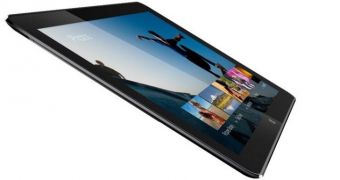Back at Computex 2014, the first systems based on Intel’s new Broadwell architecture were shown for the world to see. Furthermore, the company promised such devices were scheduled to make an appearance into retail by Christmas.
But it appears this will not be the case and their availability will be quite limited until the end of the year. Products bundling the new chip architecture will reportedly start shipping out to the masses in 2015.
Speaking to Intel representative, CNET discovered that the company expects initial Broadwell-based designs (2-in-1s using Core M processors included) to be on the shelves by the end of this year, but the wider host of products will enjoy broader OEM availability only in 2015.
So if you’re mulling over 2-in-1 devices like the ASUS Transformer Book T300 Chi, one of the first machines expected to take advantage of Broadwell, you still have to wait for quite a while.
Surely, we’re going to see more products taking advantage of the architecture be announced until year’s end, but customers won’t find them on shelves until 2015.
Even if laptops and PCs taking advantage of Intel’s next-gen processor architecture have traditionally been rolled out over the summer, in time to make it out for the back-to-school period, this is not happening this year, as Intel seems to have a bit of bad luck with Broadwell.
At Computex 2014, Intel also teased a super thin and light 2-in-1 tablet/laptop reference design in order to cue device manufacturers into adopting this form factor.
The prototype was dubbed Llama Mountain and was put on display in two form factors, a 12.5-inch one and a 10-inch one. The larger one measures 0.28 inches / 7.2 mm in thickness and weighs 1.48 lbs / 670 g, while the 10-incher is 0.27 inches / 6.8 mm thick and 1.2 lbs / 550 g in weight.
The 2-in-1 takes advantage of Intel Core M processors based on Broadwell, which are said to be the most energy-efficient to date. The first batch of Core M chips will arrive with two x86 cores, Hyper-Threading technology, Intel HD Graphics core with 24 execution units, 3MB of L3 cache and dual-channel DDR3.
Intel hasn’t said anything about the consumption of the Core M chips, but it’s very possible they will end up consuming approximately 4.5W or even lower.
So, for the time being, Haswell is going to be the familiar face we’re going to see in most performant tablets, laptops and hybrids. After all, the chip is quite capable and delivers long battery life and good performance, so it's not all that bad.

 14 DAY TRIAL //
14 DAY TRIAL //